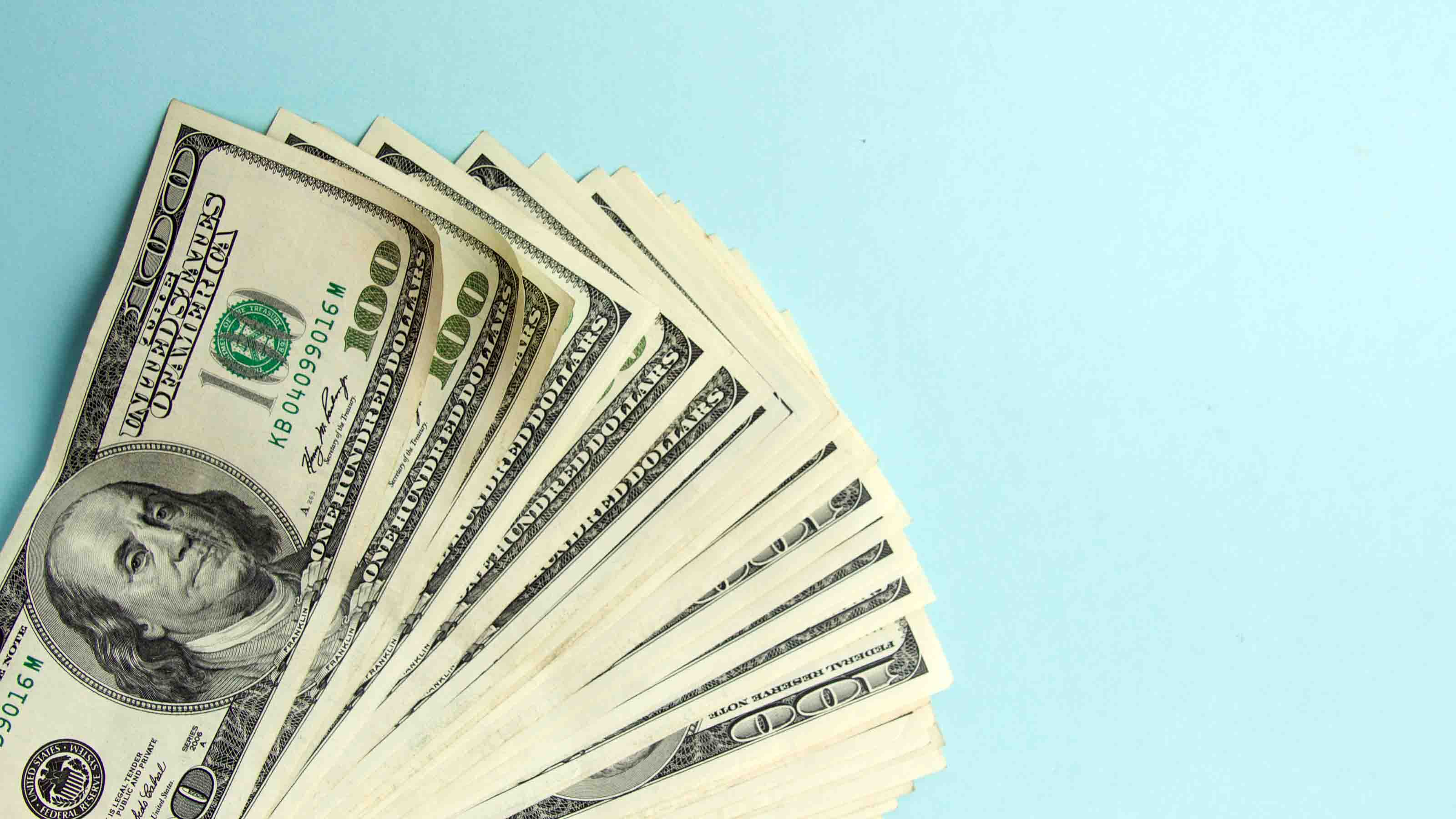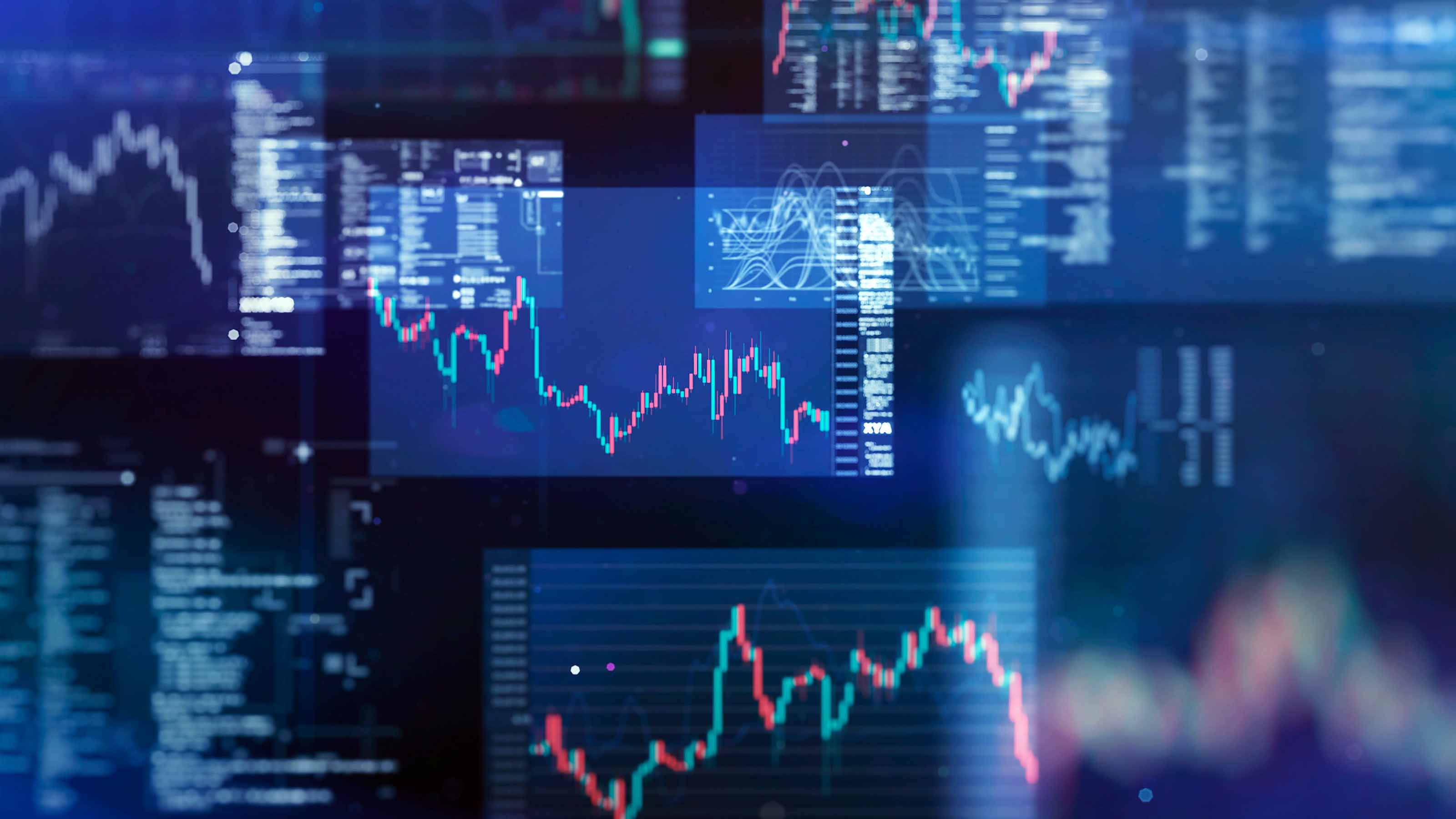Best Index Funds for a Low-Priced Portfolio
Index funds are popular thanks to their low fees and wide diversity of stock selections. Here are nine that stand out.


The world of exchange-traded funds (ETFs) has been growing in popularity over the past few decades. While there are a seemingly endless number of ETFs for investors to choose from, index funds have emerged as some of the most sought-after thanks in part to their lower fees and wider diversity of stock selection.
Index funds seek to track the return of a broader benchmark like the Dow Jones Industrial Average or a subset of the market such as small-cap growth stocks or health care.
Among the most popular is the Vanguard S&P 500 ETF (VOO), which tracks the S&P 500 Index and currently has around $600 billion in assets under management.
Why should you invest in index funds?
One reason, writes Kiplinger contributor Coryanne Hicks, is for their low cost.
"When you go shopping, would you rather pay in pennies or dollars? Obviously, it's much easier to hand over a single dollar bill than it is to count out 100 pennies. A similar concept can be applied to an index fund," Hicks writes in her article on what is an index fund. "If you want to invest in the S&P 500, you could go out and buy shares in each of the 500 companies within the index, or you could find an S&P 500 index fund and buy a single share of that."
Another reason comes from Dan Burrows, senior investing writer at Kiplinger.com. "It's almost impossible to beat the market for any sort of sustained period of time," Burrows writes in his column on why he chooses to invest in index funds over stocks.
"You might get lucky for a year or two; maybe three even. But you are probably not the next Warren Buffett. I know for certain that I'm not."
What's more, index funds offer diversification. They can include hundreds or even thousands of stocks or bonds across a range of sectors and sizes. And this lowers the risk of one stock torpedoing your return.
With this in mind, here are nine of the best index funds to buy for various financial goals. This is a wide selection of the best ETFs and mutual funds that investors can choose from, including those with exposure to large-cap stocks, technology and international firms.
Data is as of March 26. Dividend yields represent the trailing 12-month yield, which is a standard measure for equity funds.

Vanguard Dividend Appreciation ETF
- Type: Large blend
- Assets under management: $87.2 billion
- Dividend yield: 1.7%
- Expenses: 0.05%, or $5 annually for every $10,000 invested
When it comes to the best index funds, the Vanguard Dividend Appreciation ETF (VIG) is an excellent choice if you value safety and income growth.
The fund tracks the performance of the S&P U.S. Dividend Growers Index, a group of the best dividend stocks that have increased their annual dividend payments for 10 consecutive years.
Only regular quarterly cash dividends are considered for inclusion. Special cash payouts and stock dividends are excluded. To be considered for the index, a stock must have a three-month median daily value traded of $1 million. Existing stocks have a $500,000 minimum. Holdings are capped at a 4% weighting each.
VIG currently holds roughly 340 stocks, with a median market cap is $222.4 billion. The average five-year earnings growth rate for stocks in the Vanguard Dividend Appreciation ETF is 11.0%, with price-to-earnings (P/E) and price-to-book (P/B) ratios of 25.3 and 4.8 times, respectively.
The ETF's top 10 holdings account for more than 30% of its net assets. Currently, the top three holdings by weight are blue chip stocks Apple (AAPL), Broadcom (AVGO) and JPMorgan Chase (JPM). The largest sector exposure is found in technology (24%), financials (20%) and healthcare (16%). U.S. stocks account for 99% of the portfolio.
The Vanguard Dividend Appreciation is also part of the Kiplinger ETF 20, a list of our favorite cheap exchange-traded funds. VIG is also available as a mutual fund (VDADX) with a $3,000 investment minimum and a 0.07% expense ratio.

ProShares S&P 500 Dividend Aristocrats ETF
- Type: Large value
- Assets under management: $11.7 billion
- Dividend yield: 2.0%
- Expenses: 0.35%
Another one of the best index funds for income investors is the ProShares S&P 500 Dividend Aristocrats ETF (NOBL), which, as you can tell by the name, tracks the performance of the S&P 500 Dividend Aristocrats Index.
The S&P 500 currently includes 67 Dividend Aristocrats, defined as companies that have increased their annual dividends for at least 25 consecutive years.
The index contains a minimum of 40 equally weighted stocks, with no sector accounting for more than 30%. It is reconstituted yearly in January and rebalanced in April, July and October.
NOBL invests in all 69 eligible stocks, with top holdings including utility firm Consolidated Edison (ED) and drugmaker AbbVie (ABBV). The weighted average market cap of the index fund is $100.13 billion, with P/E and P/B ratios of 21.9and 3.6 times, respectively.
The top two sectors by weighting are consumer staples (24.5%) and industrials (22.8%), followed by materials stocks (11.5%), financial stocks (11.1%) and health care (10.7%).
The fund's five-year annualized total return (price plus dividends) is 11.5%, slightly trailing its underlying index.

Vanguard High Dividend Yield ETF
- Type: Large value
- Assets under management: $59.4 billion
- Dividend yield: 2.6%
- Expenses: 0.06%
The Vanguard High Dividend Yield ETF (VYM) is among the lowest-cost index funds for investors seeking high yields but not high risk.
The fund tracks the performance of the FTSE High Dividend Yield Index – a portfolio of more than 500 stocks ranked by their forecast dividends for the next 12 months and weighted by their market cap.
The ETF currently holds 529 stocks, in line with the index. Top 10 holdings account for 25% of its $59 billion in total net assets, with Broadcom, JPMorgan Chase (JPM), Exxon Mobil (XOM), Walmart (WMT) and Procter & Gamble (PG) at the top of the list.
VYM is also reasonably balanced from a sector perspective, with six double-digit weightings – financials (22.8%), industrials (11.9%), health care (11.5%), consumer staples (10.7%), consumer discretionary (10.4%) and technology (10.2%).
VYM maintains an ultra-low 0.06% expense ratio – a fraction of the average expense ratio for most large-cap funds. It also benefits from a low 6% turnover.
The Vanguard High Dividend Yield ETF has earned four stars from Morningstar for the three-year, five-year, and 10-year periods. It is available as a mutual fund (VHYAX) with a $3,000 investment minimum and a slightly higher 0.08% expense ratio.

WisdomTree U.S. MidCap Dividend ETF
- Type: Mid-cap value
- Assets under management: $3.7 billion
- Dividend yield: 2.2%
- Expenses: 0.38%
The WisdomTree U.S. Midcap Dividend Fund (DON) is one of the best index funds for investors seeking exposure to mid-cap stocks that pay dividends.
The ETF tracks the performance of the WisdomTree U.S. MidCap Dividend Index.
Investors often overlook mid-cap stocks because they're considered less stable than large caps and possess fewer growth prospects than small caps. The reality is that they are located in the "sweet spot" between the two.
DON is quite diversified. Its top 10 holdings account for less than 11% of its $3.7 billion in net assets. The top holding is utility stock Evergy (EVRG), followed by casino real estate investment trust (REIT) Gaming and Leisure Properties (GLPI) and property and casual insurance firm CNA Financial (CNA).
From a sector perspective, the three largest weightings are financials (25.1%), industrials (14.8%) and consumer discretionary stocks (11.2%).
As for its returns, DON has averaged an annual total return of 12.6% over the past five years vs the S&P 500's 18.6% average annual return.

Schwab US Small-Cap ETF
- Type: Small blend
- Assets under management: $16.3 billion
- Dividend yield: 1.6%
- Expenses: 0.04%
The Schwab US Small-Cap ETF (SCHA) tracks the performance of the Dow Jones U.S. Small-Cap Total Stock Market Index, a subset of the Dow Jones U.S. Total Stock Market Index.
The small-cap index includes the components ranked No. 751 through No. 2,500 by full market capitalization. As a result, it provides investors with a low-cost way to invest in small-cap stocks.
SCHA was launched in November 2009 and has more than 1,730 holdings. The weighted average market cap is $5.0 billion, and approximately 67% of its holdings have a market cap between $3 billion and $15 billion. Another 25% are between $1 billion and $3 billion, with roughly 6.6% of the portfolio is allocated in holdings with market caps below $1 billion.
The top three sectors by weighting are financials (18.5%), industrials (17.5%) and tech stocks (14.1%). The top 10 holdings account for 3% of its $16 billion in assets under management.
Included at the top of the list are psychiatric drugmaker Intra-Cellular Therapies (ITCI), social media stock Reddit (RDDT) and mobile learning platform Duolingo (DUOL).
The ETF's annualized return since its November 2009 inception is 11.3%, roughly in line with the broader S&P 500.

SPDR Portfolio S&P 1500 Composite Stock Market ETF
- Type: Large blend
- Assets under management: $9.5 billion
- Dividend yield: 1.3%
- Expenses: 0.03%
The SPDR Portfolio S&P 1500 Composite Stock Market ETF (SPTM) tracks the performance of the S&P Composite 1500 Index. The S&P Composite 1500 combines the S&P 500, S&P MidCap 400, and S&P SmallCap 600, creating a one-stop shop for almost the entire U.S. stock market.
SPTM, meanwhile, uses a sampling strategy, which means it doesn't have to buy all of the stocks in the index; it only has to replicate its performance.
State Street launched the ETF in October 2000. It currently has roughly 1,500 holdings with a weighted average market cap of $870 billion. The average stock has estimated earnings growth of 12.5% for the next three to five years.
SPTM's top 10 holdings account for around 31% of its $9.5 billion net assets and include mega-cap stocks such as Apple, Nvidia (NVDA), Microsoft, Amazon.com (AMZN) and Meta Platforms (META).
In terms of sector weightings, the three largest are technology (28.5%), financials (14.9%) and health care (10.8%).
Morningstar seems to agree that SPTM is one of the top index funds out there, giving the ETF a four-star rating over three-, five- and 10-year periods. Its annualized return from inception is 8.1%.

Invesco QQQ Trust
- Type: Large growth
- Assets under management: $304.1 billion
- Dividend yield: 0.6%
- Expenses: 0.20%
The Invesco QQQ Trust (QQQ) is considered to be one of the best index funds for investors seeking exposure to innovative companies in the tech sector and elsewhere.
The ETF tracks the performance of the Nasdaq-100 Index, a collection of 100 of the largest domestic and international non-financial companies listed on the Nasdaq Composite.
Invesco launched QQQ in March 1999. Since its inception, it has significantly outperformed the S&P 500: A $10,000 investment in QQQ in 1999 was worth more than $51,500 as of March 25, 2024, $12,500 more than the index.
According to Lipper, QQQ has been the best-performing large-cap growth fund over the past 15 years. It's also the second most-traded ETF in the U.S. based on average daily volume, and it gets a five-star rating from Morningstar for its 10-year risk-adjusted return.
Because of its innovation focus, there are times when its performance lags, as was the case in 2022. As a result, QQQ's total return was -32.6%, nearly 80% worse than the SPDR S&P 500 ETF Trust. However, in 2023, it generated a total return of 54.8%, more than two times greater than SPY.
Over the long haul, QQQ has proven it can deliver for investors.
Nearly 60% of the fund's holdings are in the tech sector, followed by consumer discretionary stocks (20%) and health care (5%).
Its top-heavy, too, with its 10 biggest holdings accounting for 50% of its net assets, including Apple at 9.1%, Microsoft at 7.9% and Nvidia at 7.6% of the portfolio. If you don't like many of the names with more significant weightings, QQQ might not be for you.
For everyone else, it's an excellent buy for a core ETF portfolio.

Fidelity ZERO Large Cap Index Fund
- Type: Large blend
- Assets under management: $12.6 billion
- Dividend yield: 1.1%
- Expenses: 0.00%
The Fidelity ZERO Large Cap Index Fund (FNILX) is the first of two mutual funds featured here, both of which are from Fidelity. The ZERO in FNILX's name represents the fees you will pay for this large-cap blend: zero.
FNILX got off the ground in September 2018. It was one of two no-fee funds Fidelity launched at that time, adding to the asset management firm's two other funds with zero expense ratios and no minimum investments from August 2018.
As for the meat of the mutual fund, FNILX tracks the performance of the Fidelity U.S. Large Cap Index, a float-adjusted, large-cap-weighted index that represents the largest U.S. companies.
The fund's sampling process considers dividend yield, capitalization, industry exposures, P/E and P/B ratios and earnings growth to create a group of holdings replicating the index's performance.
As of February 28, the Fidelity ZERO Large Cap Index Fund had 513 holdings, including portfolio heavyweights Apple (7.1%), Nvidia (6.0%) and Microsoft (5.8%). The top 10 holdings account for about 34% of its $12.6 billion in net assets.
The three largest sectors are technology (31.2%), financials (14.5%) and health care (10.7%).

Fidelity International Index
- Type: Foreign large blend
- Assets under management: $56.0 billion
- Dividend yield: 3.0%
- Expenses: 0.035%
The Fidelity International Index Fund (FSPSX, $51.33) is the only non-U.S. fund covered here. The main feature is that FSPSX gives investors low-cost exposure to international stocks.
FSPSX followshe performance of the MSCI EAFE Index, which tracks developed markets only. There are no emerging markets countries included.
The top three countries by weighting are Japan (21.4%), the U.K. (14.8%) and France (11.1%), while the largest sectors include financials (22.4%), industrials (17.2%) and health care (12.3%). Unlike U.S. large-cap funds, you'll notice that FSPSX's tech exposure is modest, at just 8.6% of the portfolio – a little more than a quarter of the tech weighting in FNILX.
As of February 28, there were roughly 740 holdings in the fund, with the top 10 accounting for 13.7%% of its $56 billion in net assets.
Familiar names include pharmaceutical giants Novo Nordisk (NVO) and AstraZeneca (AZN) as well as semiconductor manufacturer ASML Holdings (ASML) and candy maker Nestle (NSRGY).
The fund got its start in November 1997 and has averaged an annual return of 5.3% since its inception.
Learn more about FSPSX at the Fidelity provider site.
Related content
Get Kiplinger Today newsletter — free
Profit and prosper with the best of Kiplinger's advice on investing, taxes, retirement, personal finance and much more. Delivered daily. Enter your email in the box and click Sign Me Up.

Will has written professionally for investment and finance publications in both the U.S. and Canada since 2004. A native of Toronto, Canada, his sole objective is to help people become better and more informed investors. Fascinated by how companies make money, he's a keen student of business history. Married and now living in Halifax, Nova Scotia, he's also got an interest in equity and debt crowdfunding.
-
 Stock Market Today: Stocks Soar on China Trade Talk Hopes
Stock Market Today: Stocks Soar on China Trade Talk HopesTreasury Secretary Bessent said current U.S.-China trade relations are unsustainable and signaled hopes for negotiations.
By Karee Venema
-
 2026 Disney Dining Plan Returns: Free Dining for Kids & Resort Benefits
2026 Disney Dining Plan Returns: Free Dining for Kids & Resort BenefitsPlan your 2026 Walt Disney World vacation now. Learn about the returning Disney Dining Plan, how kids aged three to nine eat free, and the exclusive benefits of staying at a Disney Resort hotel.
By Carla Ayers
-
 Stock Market Today: Stocks Soar on China Trade Talk Hopes
Stock Market Today: Stocks Soar on China Trade Talk HopesTreasury Secretary Bessent said current U.S.-China trade relations are unsustainable and signaled hopes for negotiations.
By Karee Venema
-
 How Can Investors Profit From AI's Energy Use?
How Can Investors Profit From AI's Energy Use?Global energy demand is expected to grow by leaps and bounds over the next several years as AI usage accelerates. Here's how to get a piece of the pie.
By Jacob Schroeder
-
 Can Trump Fire Powell? A Supreme Court Case Could Decide
Can Trump Fire Powell? A Supreme Court Case Could DecidePresidential posts threaten to overwhelm decades of precedent and tradition, whatever the nine justices decide.
By David Dittman
-
 What Are AI Agents and What Can They Do for You?
What Are AI Agents and What Can They Do for You?AI agents promise to be the next big thing in artificial intelligence, but what exactly do they do?
By Tom Taulli
-
 Should You Buy an iPhone Now Before Tariffs Hit?
Should You Buy an iPhone Now Before Tariffs Hit?Looming tariffs can make an iPhone purchase seem urgent. Here's what to do if you need another phone but want to save money.
By Laura Gariepy
-
 SRI Redefined: Going Beyond Socially Responsible Investing
SRI Redefined: Going Beyond Socially Responsible InvestingNow that climate change has progressed to a changed climate, sustainable investing needs to evolve to address new demands of resilience and innovation.
By Peter Krull, CSRIC®
-
 Here's When a Lack of Credit Card Debt Can Cause You Problems
Here's When a Lack of Credit Card Debt Can Cause You ProblemsUsually, getting a new credit card can be difficult if you have too much card debt, but this bank customer ran into an issue because he had no debt at all.
By H. Dennis Beaver, Esq.
-
 33 Stocks That Could Rally 50% or More This Year
33 Stocks That Could Rally 50% or More This YearAnalysts say these S&P 500 stocks have at least 50% price upside over the next year or so.
By Dan Burrows
